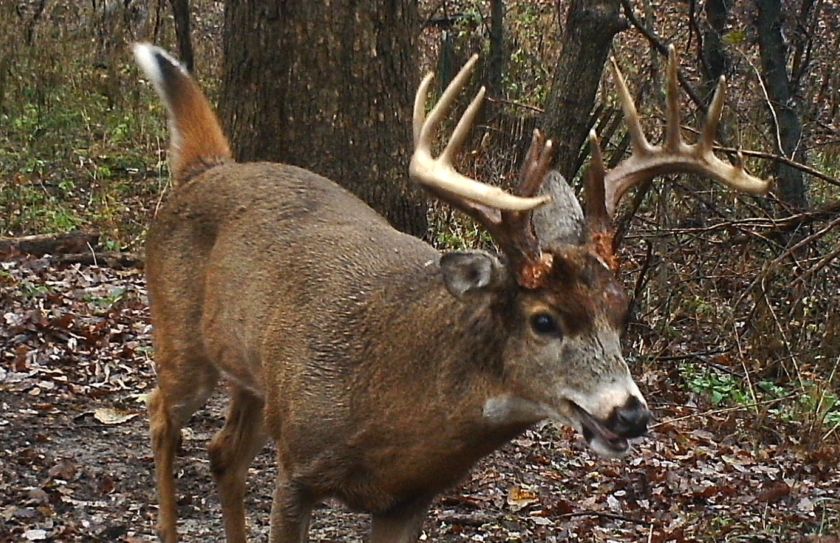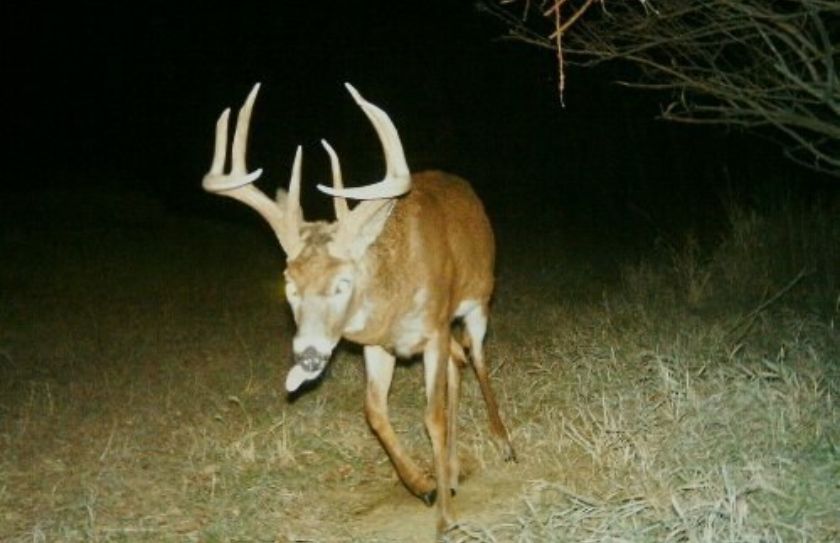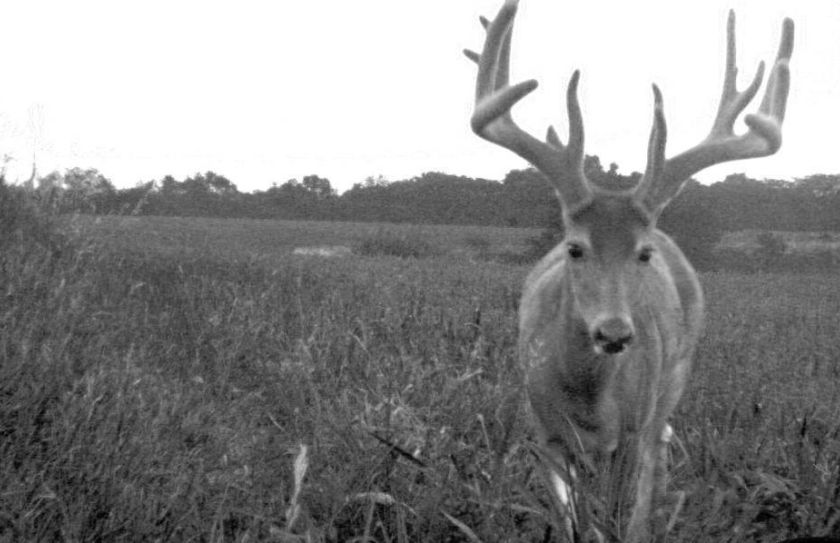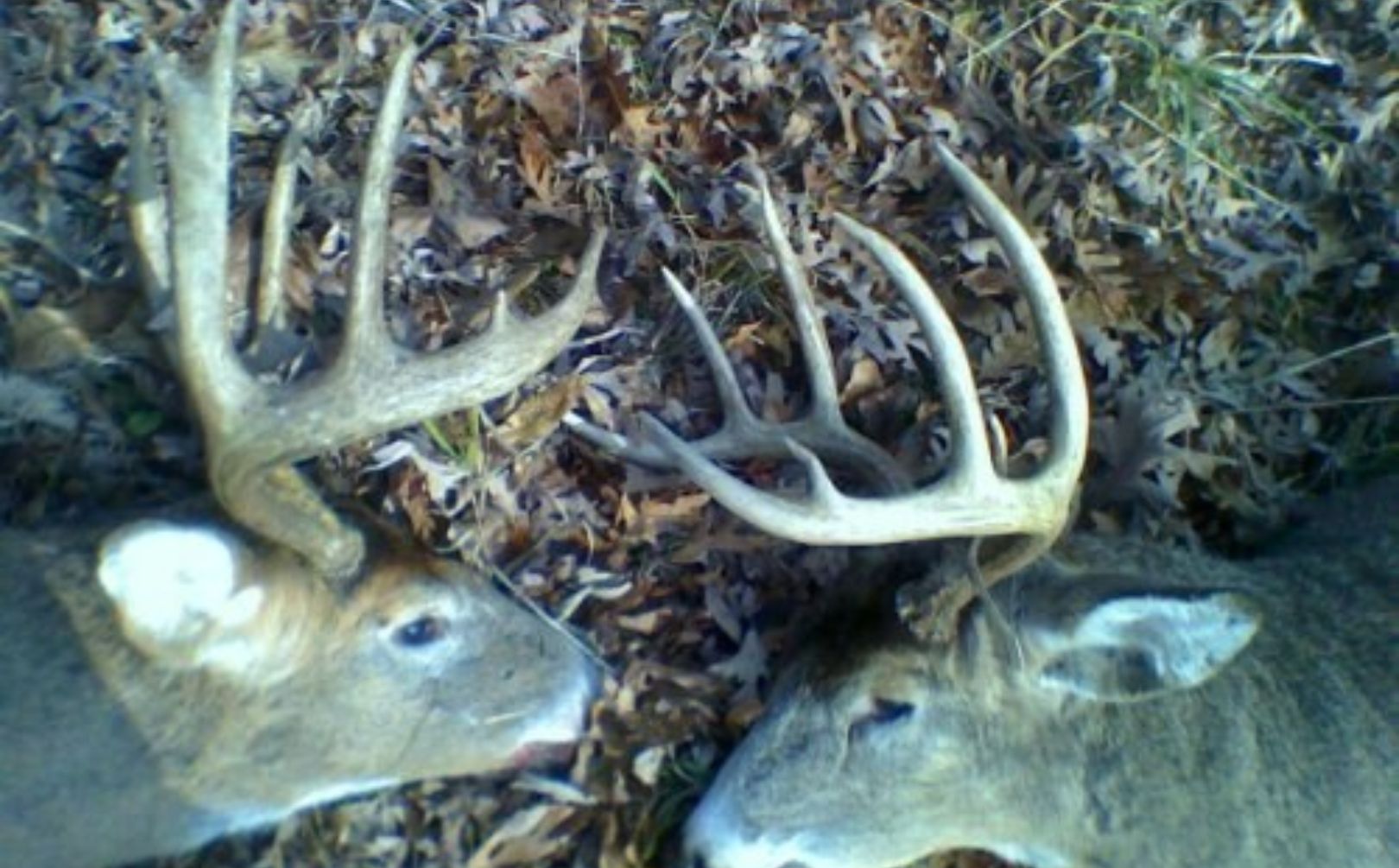
Are you a professional guide or game manager? If so, then this article may not be for you. Why? Because if you are working within the professional whitetail industry, the ability for accurately field judging whitetails between a 6 and 7 years old buck may be critical to the success of your career. As a paid guide or farm biologist, mature bucks can be worth 10s of thousands of dollars, so it pays to be extremely accurate. But for a lot of you (myself included), making a determination if a buck is a shooter or not, is your only primary concern. Yearling bucks and two year olds can be easy to guesstimate, and a three year old isn't too much harder. And after that? Well for only an extremely small minority does the difference between a 4 year old and older, come into play.
How much time do you have to take the shot? Check out bowhunting's "10 Second Rule"
The practice of field judging whitetail bucks has been a passion of mine for over 20 years, dating back to the late 80s while watching bachelor groups of bucks dine on Summer soybeans and hay within a Southern Michigan agricultural setting. Throughout the years of specifically targeting the top-end of the local buck age class within the areas that I have hunted, one very critical detail consistently emerged: There are typically 10 seconds or less to judge an animal, grab your bow and then execute the shot. The majority of my oldest buck harvests have taken place within a very brief moment of time. Several times I have shot the actual target buck we were after, and really didn't know it was that buck until I stood over it's expired body. Why? Because when mature buck hunting I have found a decision based on maturity needs to take place in 2 seconds or less if he is within bow range. I have also found that rarely did I have time to actually count the number of points! This means there is absolutely zero time for judging the size of the front shoulders vs the hindquarters, the sag in the back or belly, or the line of the neck to the brisket. The process is confusing enough without adding a checklist of 8 must-see physical features to be able to judge an animal, so I am looking forward to sharing an efficient process with you that has worked well for me.
Does it get any easier after the kill? It doesn't appear so! I found this chart from the QDMA to be extremely interesting:
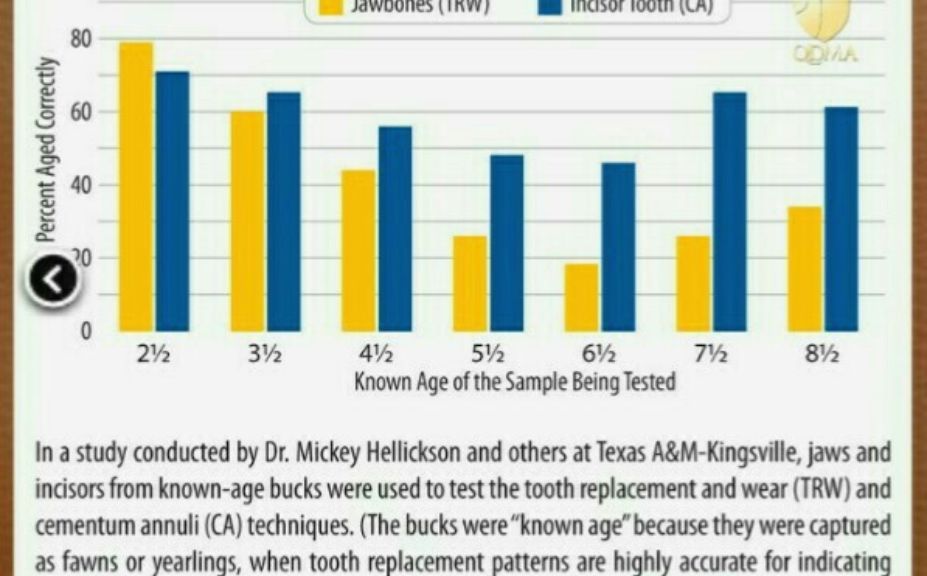
This was a great chart and confirmed that even the best of jawbone aging experts were fairly inaccurate, especially as the age of the bucks being estimated increased to 6.5 years old. A slight bump in accuracy was actually noticed while estimating the age of 7.5 year old bucks by both the Cementum Annuli and Jawbone techniques. The jawbones and teeth from 263 known aged bucks were used for the study, with 5 wildlife biologists guessing the age of the jawbones through the aid of the use of reference materials, and 2 individuals from the C.A. lab, including lab owner Dr. Gary Matson.
The Accuracy Highlights:
*2.5 Year Old Bucks: 78% with Jawbone aging techniques and 75% with CA
*3.5 Year Old Bucks: 60% with Jawbone aging techniques and 65% with CA
*4.5 Year Old Bucks: 43% with Jawbone aging techniques and 56% with CA
*5.5 Year Old Bucks: 26% with Jawbone aging techniques and 48% with CA
Do those numbers surprise you? I visit with dozens of clients each year and it is always interesting to look at a set of antlers that surely appear to be 4.5 years old or older, yet the buck was estimated by jawbone to be a 3.5 year old. Looking at the above chart offers a great deal of perspective. If the particular buck that was guessed to be 3.5, was actually 4.5...even some of the most experienced agers in the country were only correct 43% of the time. If it was 5.5 year old that number tumbles to a 26% accuracy rate. Even a 2.5 year old buck was correctly guessed only 78% of the time, at best. What does this mean for you? It means that it pays to be able to make a 2 second judgement in the woods, with just a simple glance.
An antler flashes between the leaves 50-60 yards out! As your heart rate quickens, you reach for the bow and by the time you are ready his pace has carried him to within 30 yards. He is now 10 yards from a potential shot and the moment of truth has arrived! As you raise to ready your bow you have had less than a second to determine his age, and the other second will be over shortly as you steal a glance while drawing your bow. What did you see? Here is a short collection of physical data that should enter a quick calculation:
1. Color of the Rack and Coat.
Looking at the above picture of the 2 dead bucks, the buck on the left was 4.5 and the one on the right, 3.5. Notice any differences? Of course in the entire game of field judging nothing is ever for certain, but many times the color of the rack and hair of an older aged buck is darker. Deer antlers become bleached with sun, and so does the coat. More shade=a darker coat and set of antlers, which is often the case with a reclusive old Monarch who rarely shows himself during the daylight hours. Of course this may not be the case with an old marsh buck, as he bleaches his tines each day while basking in the open sunlight. And come to think of it, isn't it pretty cool that a buck matches his surroundings?
2. Antler Mass.
Older bucks often feature a LOT of mass. Of course this is all relative, meaning the mass in one region can be far greater than the mass in another region, but overall bucks within the same local, reflect each other. What's a lot of mass? If the base of the antler is equal to or greater than the width of the opening for the eye right below it...there is a lot of mass!
3. Attitude.
Mature bucks walk with an attitude. They are slow, determined and methodical in their movements. They are also heavy walkers, often cruising by with a firm level of certain intent. Compared to the prance of a young buck, a large-bodied giant is an incredible site to behold! If you couldn't see anything else but the lower 1/2 of a mature buck, his determined pace should offer a high degree of accuracy when determining his maturity status. If you have to wonder...he probably isn't old enough (and that applies to most of these variables).
4. Main Beam Length.
From the side, if the tips of the main beams are even with the tip of the nose, SHOOT! 2 and even 3 year olds typically fall well short of the tip of the nose and if you add any noticeable upward sweep you could be looking at a true, world-class giant.
5. Overall Antler Size.
Even inferior, mature bucks typically feature an incredible set of antlers! A 6 year old with an 140" "inferior" crown will still look extremely impressive. Of course we have all heard about the 180" 3.5 year olds, but the first thing I have to wonder is...according to which method of aging? Because neither offered much more than a 50% level of accuracy.
The Calculation
The 5, quick-glance physical features that I shared with you shouldn't be a mental checklist, because you just don't have that much time to calculate. The calculation should be a culmination of the experience of judging as many bucks in the field or on the screen, as possible. On The Screen?Yes! One of the most enjoyable things I have done in the past with my kids is to watch hunting videos, and within a split second glance of the first appearance of a buck...guess, and look away. Was he a shooter? How old? 4 year old +, yearling, 2 year old, etc. I find that if you attempt to place a buck within one of the 3 categories of yearling/2 year old, 3 year old and shooter you may find that you can guess the age to a much higher degree than when using the process jawbone techniques or CA. The cool thing? You can perform your estimate on a live animal, at a glance.
Over time the more animals you watch, the more accurate your estimations become. Learn to develop a feel for the age of the buck you are looking at, within a 2 second glance at most. The human mind is an incredible tool to rely on for an experienced estimation of effective variables.
Conclusion
Last year I was after a couple of 5 and 6 year olds. I thought I was shooting the buck I was after each time I pulled the trigger, but I really wasn't sure. The one thing I was sure about though was that they were both mature bucks when I fired the shot! In the end it didn't really matter to me if the bucks were 5, 6, 7 or 8 years of age. Instead, they represented the oldest age of bucks in the neighborhood and it was time for the harvest.
The art of field judging whitetails at a glance is a great method to practice because it is often acceptable enough within most hunting situations, to place a buck into only 3 categories. As a hunter who has routinely had to rely on quick harvest decisions in typical hunting situations to shoot some of my largest and oldest bucks throughout the past many years...I greatly rely on the method! What about you? Whether you are after a 2 year old buck in heavily pressured hunting areas, or some of the oldest bucks in the country on parcels most could only imagine, I believe that developing a quick method for estimating age in the field is vital to your success.
